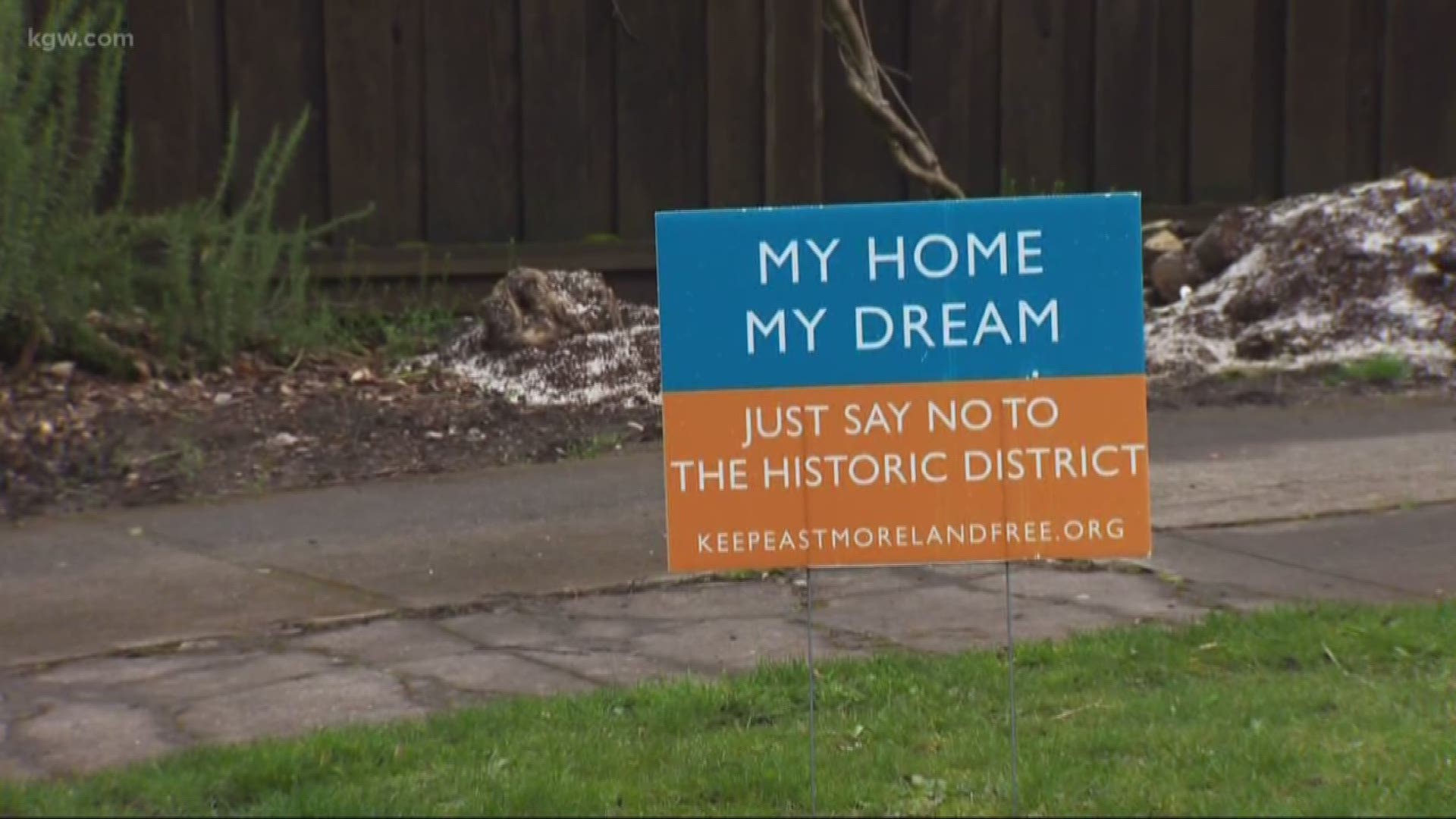PORTLAND, Ore. – Eastmoreland homeowners won’t be able to claim that their neighborhood is a national historic district anytime soon, thanks to a few residents who found a legal loophole to stop the effort to get the picturesque neighborhood listed in the National Register of Historic Places.
Neighbors have been battling over the neighborhood association’s efforts to get Eastmoreland registered as a historic district for years. Proponents say a historic designation preserves the character of old homes. Opponents object to the restrictions that come with a designation, including additional review if they want to make improvements such as changing front-facing windows or adding an addition on to their home.
The historic district was being considered by the Oregon State Historic Preservation Office (SHPO), which was fielding letters of objection and support to see whether a majority of Eastmoreland residents want the designation.
On Wednesday, SHPO said the office received 5,952 objections from homeowners, which is more than 80 percent of Eastmoreland's 7,188 residents.
The issue riling proponents of the historic district is that about 5,000 of those "residents" were recently created by a handful of property owners who split their homes into thousands of shares. The homeowners basically sold fractions of their property's ownership back to themselves so one person could own hundreds or thousands of shares of their one home.
In March, one opponent took this creative approach to fighting the historic designation. KGW first reported that resident Patrick Cumming split his home into 1,000 shares, in order to object 1,000 times against the historic district designation. Since then, other homeowners have followed suit.
The tactic worked. SHPO said each of the shares was counted as an equal vote, which stopped the neighborhood’s progress toward becoming a national historic district.
“According to federal rules, if more than 50% of the owners in a district submit objections, the property cannot be listed,” a spokesman for SHPO said.
The President of the Eastmoreland Neighborhood Association likened the ruling to voter fraud.
“Absent the 5,000 trusts generated by four property owners, the opposition was not even close to winning,” said ENA President Rod Merrick. “We can thank our unscrupulous neighbors for helping the opponents to justify their tactics by claiming that the process of counting objections is undemocratic. If this was an election, it would be called voter fraud.”
Since the SHPO recognized each of the residents’ shares as separate owners with separate votes, proponents say that could set precedent for objecting residents in neighborhoods across the country from stopping efforts for historic designations.
“At this point supporters of the nomination will be working with allies to make this kind of abuse a national issue,” Merrick said.
A coalition of Eastmoreland neighbors called HEART (Historic Eastmoreland Achieving Results Together) said SHPO "de-legitimized itself as an agency" by recognizing the shares.
"These 5,000 trusts were created by four households, and disproportionately misrepresented the actual support for the historic district," HEART said in a press release.
Cummings said he split his property into 1,000 shares because the National Historic District nomination process is flawed, in that it assumes homeowners who do not send statements of support or opposition are in favor of the historic district.
"In Oregon, the unintended consequence of well-meaning land use legislation gives this honorary designation instant enforcement of some of the most stringent land use regulations in the country," Cummings said.
He said the neighborhood association ignored a neighborhood vote to stop the process, and spent $67,000 of the organization's money on consultants to help the historic district happen.
"There was never a possibility of a great outcome from a fundamentally flawed process engaged in by a board with unsound, myopic, and self-interested motivations. The best possible outcome was the status quo ante, and I am glad to see that will be the final result," Cummings said.
The National Parks Service is verifying the count and accepting public comment and new objections, meaning this fight is not over yet. ENA said they have not decided whether to file new objections.

